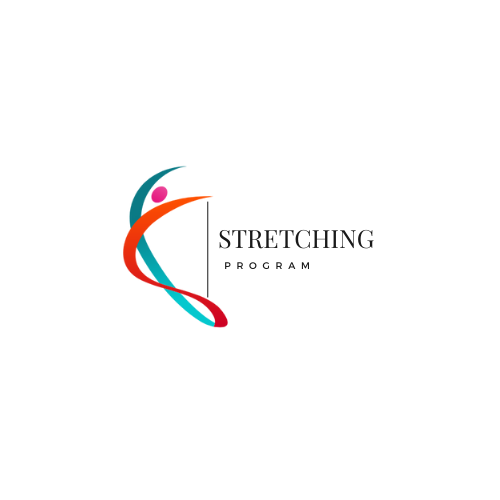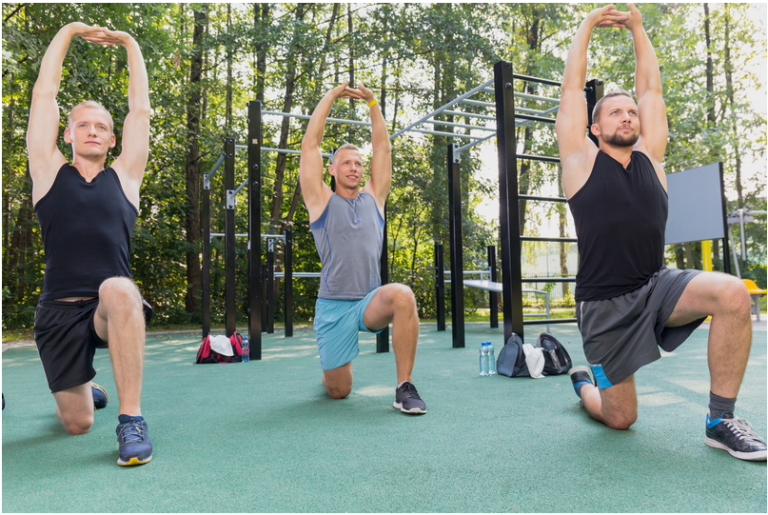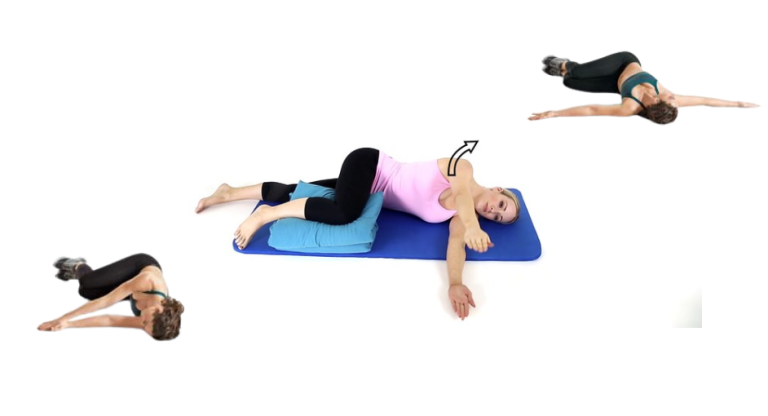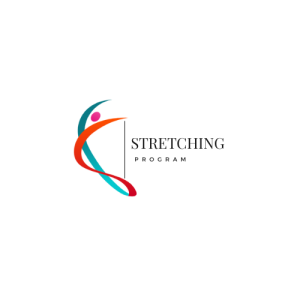
Iliotibial Band Stretching Exercises | for Syndrome and Prevent Knee Pain Relief
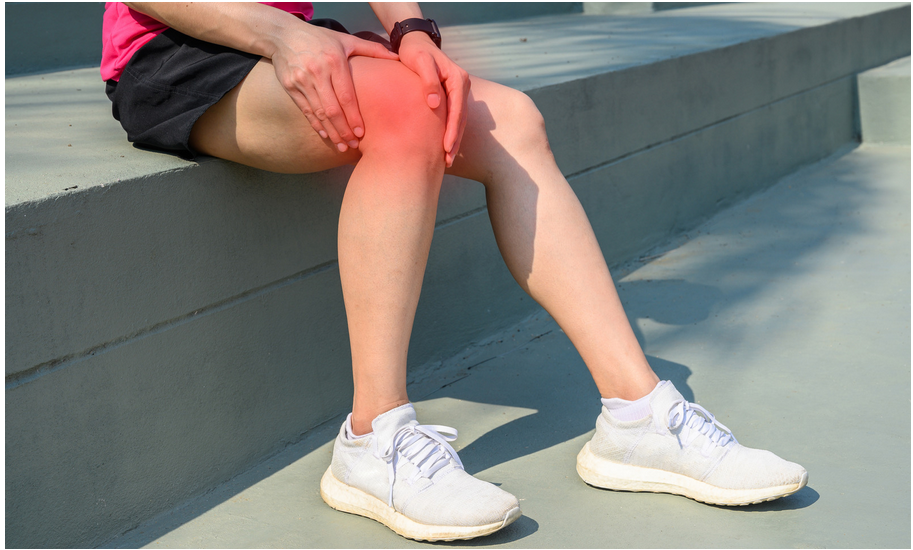
Do you suffer from knee pain worsening when you run, cycle, or hike? Do you feel a sharp or burning sensation on the outside of your knee that makes it hard to walk or bend your leg? If you answered yes to these questions, you might have iliotibial band syndrome, a common condition affecting many active people.
The iliotibial band, or IT band, is a thick band of tissue that runs down the outside of your thigh, from your hip to your knee. It helps stabilize the hips and knees and allows you to move your leg in different directions. However, when the IT band becomes tight, inflamed, or irritated, it can cause pain and inflammation on the outer side of the knee, where it rubs against the bone.
Overuse, such as long-distance running, cycling, or cycling on uneven surfaces, is a common cause of iliotibial band syndrome. Additionally, muscle weakness, imbalance, or tightness in the glutes, hips, or thighs may cause it to occur because these conditions can affect the IT band’s alignment and movement. Other factors contributing to IT band syndrome include poor posture, improper footwear, or a sudden increase in physical activity.
Fortunately, proper stretching, strengthening, and self-care can treat and prevent iliotibial band syndrome. Stretching the IT band and the muscles that attach to it can help reduce tension, improve flexibility, and prevent further injury. In this article, we will show you some of the best iliotibial band stretching exercises you can do at home or the gym. These stretches will target the IT band, the quads, the glutes, and the hip flexors, which are all involved in the function and movement of the IT band.
Key Takeaways
- Learn how to stretch your IT band and prevent knee pain
- Discover 10 effective iliotibial band stretching exercises for your thigh, hip, and knee muscles
- Improve your flexibility, range of motion, and performance with regular stretching
- Find out the scientific and clinical evidence behind iliotibial band stretching
- Take care of your body and enjoy your physical activity
Before you start, make sure you warm up your muscles with some light cardio, such as jogging, cycling, or skipping. This will increase blood flow and prepare your muscles for stretching. You should also avoid stretching if you feel pain, swelling, or inflammation in your knee, which could indicate a more serious injury or medical condition. If you have any doubts, consult your doctor or physical therapist before attempting these stretches.
What is the Iliotibial Band and Why Does It Hurt?
The iliotibial band, or IT band, is a thick band of fibrous tissue that runs outside your thigh, from your hip to your knee. It is not a muscle but rather a connective tissue that links several muscles in your leg, such as the tensor fasciae latae (TFL), the gluteus maximus, and the vastus lateralis. The IT band helps stabilize the hip and knee joints and allows you to move your leg in different directions, such as flexing, extending, abducting, and rotating.
The IT band also attaches to the top of the tibia, the lower leg bone, near the knee joint. When the IT band is tight or overworked, it can rub against the lateral femoral condyle, a bony prominence on the outside of the femur, the thigh bone. This friction can cause irritation, inflammation, and pain on the outer side of the knee, especially when the knee is bent at a certain angle, such as during running or cycling. This condition is known as iliotibial band syndrome or ITBS.
ITBS is one of the most common causes of knee pain among runners, cyclists, hikers, and other athletes who perform repetitive or high-impact activities that involve the knee. ITBS can also affect people who sit for long periods, such as office workers or drivers, as this can shorten and tighten the IT band and the muscles around it. ITBS can interfere with your daily activities and limit your range of motion and performance.
How to Stretch Your IT Band with a Band Stretch
One of the simplest and most effective ways to stretch your IT band is to use a band stretch. A banded stretch involves using a resistance band, a towel, or a belt to gently pull your leg across your body, creating a stretch along the outside of your thigh. This stretch can help loosen the IT band and the muscles that attach to it, such as the TFL and the gluteus maximus.
To perform a band stretch, you will need a resistance band, towel, or belt long enough to wrap around your foot. You will also need a flat surface, such as a floor or bed, to lie comfortably. Here are the steps to follow:
- Lie on your back with your legs straight and your arms by your sides. Wrap the band, towel, or belt around your right foot and hold it with both hands.
- Lift your right leg and bend your knee slightly. Keep your left leg flat on the floor.
- Slowly lower your right leg across your body, toward your left side, until you feel a stretch along the outside of your right thigh. Do not twist your hips or back; keep your shoulders on the floor.
- Hold this stretch for 30 seconds, breathing deeply and relaxing your muscles. You should feel a gentle stretch, not pain or discomfort. If you feel pain, ease off the stretch and adjust your position.
- Repeat the stretch on your left leg, wrapping the band, towel, or belt around your left foot and lowering your left leg across your body toward your right side.
- Do this stretch 1-3 times on each leg, depending on your flexibility and comfort level.
How to Stretch Your IT Band with a Quad Stretch
Another way to stretch your IT band is to do a quad stretch. A quad stretch is a static stretch involving bending your knee and bringing your heel toward your glute, creating a stretch in the front of your thigh. This stretch can help loosen the IT band and the vastus lateralis, one of the four muscles comprising the quadriceps or quads.
To perform a quad stretch, you will need a wall, a chair, or a sturdy object to use for balance. You will also need some space where you can stand comfortably. Here are the steps to follow:
- Stand up straight with your feet together and your arms by your sides. Place your right hand on the wall, chair, or object for support.
- Bend your left knee and bring your left heel toward your left glute. Grab your left foot with your left hand and gently pull it closer to your glute. Keep your knees together and your hips facing forward. Do not arch your back or lean forward.
- Hold this stretch for 30 seconds, breathing deeply and relaxing your muscles. You should feel a gentle stretch in the front of your left thigh and along the outside of your left hip. If you feel pain, ease off the stretch and adjust your position.
- Repeat the stretch on your right leg, bending your right knee and bringing your right heel toward your right glute. Grab your right foot with your right hand and gently pull it closer to your glute. Keep your knees together and your hips facing forward. Do not arch your back or lean forward.
- Do this stretch 1-3 times on each leg, depending on your flexibility and comfort level.
How to Stretch Your IT Band with a Wall Stretch
A wall stretch is another static stretch that can help you stretch your IT band and the muscles around it. A wall stretch involves lying on your side with your legs straight and resting your lower leg against a wall, creating a stretch along the outside of your thigh and hip. This stretch can help loosen the IT band, the gluteus maximus, the TFL, and the gluteus medius, two muscles that help abduct or move your leg away from your body.
To perform a wall stretch, you will need a wall or door to lie next to. You will also need a mat, a towel, or a cushion that you can use to support your head. Here are the steps to follow:
- Lie on your left side with your legs straight, and your hips and knees bent at 90 degrees. Place your mat, towel, or cushion under your head for comfort. Move closer to the wall or door until your lower legs are resting against it. Your feet should be slightly higher than your hips.
- Slowly straighten your left leg and slide it up the wall or door until you feel a stretch along the outside of your left thigh and hip. Keep your right leg bent and your right foot on the floor. Do not twist your hips or back; keep your shoulders on the floor.
- Hold this stretch for 30 seconds, breathing deeply and relaxing your muscles. You should feel a gentle stretch, not pain or discomfort. If you feel pain, ease off the stretch and adjust your position.
- Repeat the stretch on your right leg, lying on your right side and straightening your right leg up the wall or door. Keep your left leg bent and your left foot on the floor. Do not twist your hips or back; keep your shoulders on the floor.
- Do this stretch 1-3 times on each leg, depending on your flexibility and comfort level.
What is Iliotibial Band Syndrome, and How do you recognize it?
Iliotibial band syndrome, or ITBS, is a common condition that affects the IT band and causes pain and inflammation on the outer side of the knee. ITBS is often caused by overuse, such as running or cycling for long distances or on uneven surfaces. It can also be triggered by muscle weakness, imbalance, or tightness in the hips, thighs, or glutes, which can affect the alignment and movement of the IT band. Other factors contributing to IT band syndrome include poor posture, improper footwear, or a sudden increase in physical activity.
The main symptom of IT band syndrome is pain on the outer side of the knee, especially when the knee is bent at a certain angle, such as during running or cycling. The pain can range from mild to severe and can come and go or persist for a long time. The pain can also radiate up or down the leg, affecting the hip or the ankle. Sometimes, the pain can be accompanied by swelling, redness, or warmth in the affected area.
IT band syndrome can be diagnosed by a doctor or a physical therapist, who will examine your knee and ask about your medical history, activities, and symptoms. They may also perform some tests, such as moving your leg in different directions, measuring your range of motion, or applying pressure on the IT band. They may also order imaging tests, such as an X-ray, an ultrasound, or an MRI, to rule out other possible causes of knee pain, such as a fracture, a ligament tear, or arthritis.
How to Prevent IT Band Syndrome with Strengthening and Stretching Exercises
The best way to prevent IT band syndrome is to address the condition’s underlying causes, such as overuse, muscle weakness, imbalance, or tightness. By strengthening and stretching the muscles that affect the IT band, such as the hips, thighs, and glutes, you can improve your alignment, stability, and flexibility and reduce the stress and friction on the IT band.
Some of the exercises that can help you prevent IT band syndrome include:
Hip abductions

This exercise targets the gluteus medius, a muscle that helps abduct or move your leg away from your body. To perform this exercise, you will need a resistance band that you can wrap around your ankles. You will also need some space where you can stand comfortably. Here are the steps to follow:
- Stand up straight with your feet together and your arms by your sides. Wrap the resistance band around your ankles and ensure it is snug but tight.
- Shift your weight to your right leg and lift your left leg to the side, keeping your knee straight and your toes pointing forward. You should feel resistance from the band and a contraction in your left glute. Do not lean to the right or let your hips drop.
- Hold this position for a few seconds, then slowly lower your left leg back to the starting position. Repeat the movement 10-15 times, switch legs, and do the same on the other side.
- Do this exercise 2-3 times a week, increasing the number of repetitions or the band’s resistance as you get stronger.
Clamshells

This exercise targets the gluteus medius and the gluteus maximus, two muscles that help stabilize the hip and the IT band. To perform this exercise, you will need a resistance band that you can wrap around your knees. You will also need a mat, a towel, or a cushion that you can use to lie down comfortably. Here are the steps to follow:
- Lie on your right side with your hips and knees bent at 90 degrees. Place your mat, towel, or cushion under your head for comfort. Wrap the resistance band around your knees and ensure it is snug but tight.
- Keeping your feet together and your hips stacked, lift your left knee, opening your legs like a clamshell. You should feel resistance from the band and a contraction in your left glute. Do not let your hips roll back or your pelvis tilt forward.
- Hold this position for a few seconds, then slowly lower your left knee back to the starting position. Repeat the movement 10-15 times, switch sides, and do the same on the other side.
- Do this exercise 2-3 times a week, increasing the number of repetitions or the band’s resistance as you get stronger.
Bridges

This exercise targets the gluteus maximus, the largest and strongest muscle in your glute. To perform this exercise, you will need a mat, a towel, or a cushion that you can use to lie down comfortably. You will also need a weight, such as a dumbbell, a kettlebell, or a medicine ball, that you can place on your hips for added resistance. Here are the steps to follow:
- Lie on your back with your knees bent and your feet flat on the floor, hip-width apart. Place your mat, towel, or cushion under your head for comfort. Place the weight on your hips and hold it with both hands.
- Squeeze your glutes and lift your hips off the floor, forming a straight line from your shoulders to your knees. You should feel a pressure from the weight and a contraction in your glutes. Do not arch your back or lift your hips too high.
- Hold this position for a few seconds, then slowly lower your hips back to the starting position. Repeat the movement 10-15 times, then rest for a minute and do another set.
- Do this exercise 2-3 times a week, increasing the number of repetitions or the weight as you get stronger.
How to Stretch Your IT Band with a Standing Iliotibial Band Stretch
A standing iliotibial band stretch is another static stretch that can help you stretch your IT band and the muscles around it. A standing iliotibial band stretch involves crossing your legs and leaning your torso to the side, creating a stretch along the outside of your leg and hip. This stretch can help loosen the IT band, the TFL, the gluteus maximus, and the gluteus medius.
To perform a standing iliotibial band stretch, you will need space to stand comfortably. You will also need a wall, a chair, or a sturdy object to use for balance. Here are the steps to follow:
- Stand up straight with your feet together and your arms by your sides. Place your right hand on the wall, chair, or object for support.
- Cross your right leg over your left leg, placing your right foot next to your left foot. Keep your knees straight and your hips facing forward.
- Lean your torso to the right, reaching your left arm overhead and to the right. You should feel a stretch outside your left leg and hip. Do not bend your elbow or twist your spine.
- Hold this stretch for 30 seconds, breathing deeply and relaxing your muscles. You should feel a gentle stretch, not pain or discomfort. If you feel pain, ease off the stretch and adjust your position.
- Repeat the stretch on your right leg, crossing your left leg over your right leg and leaning your torso to the left. Reach your right arm overhead and to the left.
- Do this stretch 1-3 times on each leg, depending on your flexibility and comfort level.
Summary and Conclusion
The iliotibial band, or IT band, is a thick band of tissue that runs outside your thigh, from your hip to your knee. It helps stabilize the hip and knee joints and allows you to move your leg in different directions. However, when the IT band becomes tight, inflamed, or irritated, it can cause pain and inflammation on the outer side of the knee, where it rubs against the bone. This condition is known as iliotibial band syndrome or ITBS.
ITBS is often caused by overuse, such as running or cycling for long distances or on uneven surfaces. It can also be triggered by muscle weakness, imbalance, or tightness in the hips, thighs, or glutes, which can affect the alignment and movement of the IT band. Other factors contributing to IT band syndrome include poor posture, improper footwear, or a sudden increase in physical activity.
Fortunately, IT band syndrome can be treated and prevented with proper stretching, strengthening, and self-care. Stretching the IT band and the muscles that attach to it can help reduce tension, improve flexibility, and prevent further injury. Some of the best iliotibial band stretching exercises that you can do at home or the gym are:
- Band stretch: This stretch involves using a resistance band, a towel, or a belt to gently pull your leg across your body, creating a stretch along the outside of your thigh.
- Quad stretch involves bending your knee and bringing your heel toward your glute, creating a stretch in the front of your thigh.
- Wall stretch involves lying on your side with your legs straight and resting your lower leg against a wall, creating a stretch along the outside of your thigh and hip.
- Standing iliotibial band stretch involves crossing your legs and leaning your torso to the side, creating a stretch along the outside of your leg and hip.
In addition to stretching, you should strengthen the muscles that affect the IT band, such as the hips, thighs, and glutes, to improve your alignment, stability, and flexibility and reduce the stress and friction on the IT band. Some of the exercises that can help you strengthen these muscles are:
- Hip abductions: This exercise involves lifting your leg to the side, against a resistance band, to work your gluteus medius, a muscle that helps abduct or move your leg away from your body.
- Clamshells: This exercise involves opening your legs like a clamshell against a resistance band to work your gluteus medius and maximus. These two muscles help stabilize the hip and the IT band.
- Bridges: This exercise involves lifting your hips off the floor, with a weight on your hips, to work your gluteus maximus, the largest and strongest muscle in your glute.
By following a stretching and strengthening exercise routine, you can prevent IT band syndrome and keep your knees healthy and pain-free. You can also improve your posture, balance, and performance and reduce the risk of other injuries or complications.
However, stretching and strengthening exercises are not the only things you can do to prevent IT band syndrome. You should also pay attention to your self-care and recovery, such as:
- Resting and icing your knee if you feel pain, swelling, or inflammation. Do not ignore or push through the pain, as this could worsen your condition and delay your healing.
- They took anti-inflammatory medications, such as ibuprofen or naproxen, to reduce pain and inflammation. However, please do not rely on these medications for long-term relief, as they can have side effects and mask the underlying problem. Always consult your doctor before taking any medication.
- Wear proper footwear that fits well and supports your arches and ankles. Avoid wearing shoes that are worn out, too tight, or too loose, as they can affect your gait and alignment. Consider using orthotics, inserts, or braces to correct biomechanical issues or imbalances in your feet or legs.
- You are varying your activities and avoiding repetitive or high-impact motions that stress your IT band. For example, if you are a runner, you can alternate running with swimming, cycling, or yoga to give your IT band a break and work different muscles. You can also change your running surface, speed, or distance to avoid overloading your IT band.
- Warm up properly before your workout and cool down afterward. This will help prepare your muscles for the activity and prevent them from tightening or cramping. You can also use a foam roller, a massage ball, or a stick to massage and release any knots or trigger points in your IT band and the muscles around it.
By following these tips, you can prevent IT band syndrome and enjoy physical activities without pain or discomfort. However, if you already have IT band syndrome, or if your symptoms do not improve with these measures, you should seek professional help from a doctor or a physical therapist. They can diagnose your condition, rule out any other possible causes, and prescribe a personalized treatment plan that may include exercises, manual therapy, modalities, or surgery, depending on the severity of your case.
Remember, IT band syndrome is not a life-threatening condition but can affect your quality of life and performance. Therefore, it is important to take care of your IT band and the muscles around it and seek help if needed. Doing so can prevent IT band syndrome and keep your knees happy and healthy. 😊
Thank you for reading this blog post. I hope you found it informative and helpful. If you have any questions, comments, or feedback, please leave them below. I would love to hear from you and learn from your experience. And if you liked this post, please share it with your friends and family who might benefit from it. Thank you for choosing stretchingprogram.com, your stretching program companion. 🙌
References
- A pilot randomized study compared three exercise programs for female runners with iliotibial band syndrome. The study found that the experimental hip strengthening exercise group improved the most pain, function, and balance measures1.
- A review article summarized the current evidence on iliotibial band syndrome, including its pathophysiology, diagnosis, and treatment. The article suggested that functional motor control exercises may be superior to traditional exercises and that extracorporeal shockwave therapy (ESWT) is a promising treatment option2.
- A research paper that evaluated the effectiveness of iliotibial band stretching and strengthening exercises in patients with patellofemoral pain. The study reported that the intervention group significantly improved pain and function compared to the control group.
